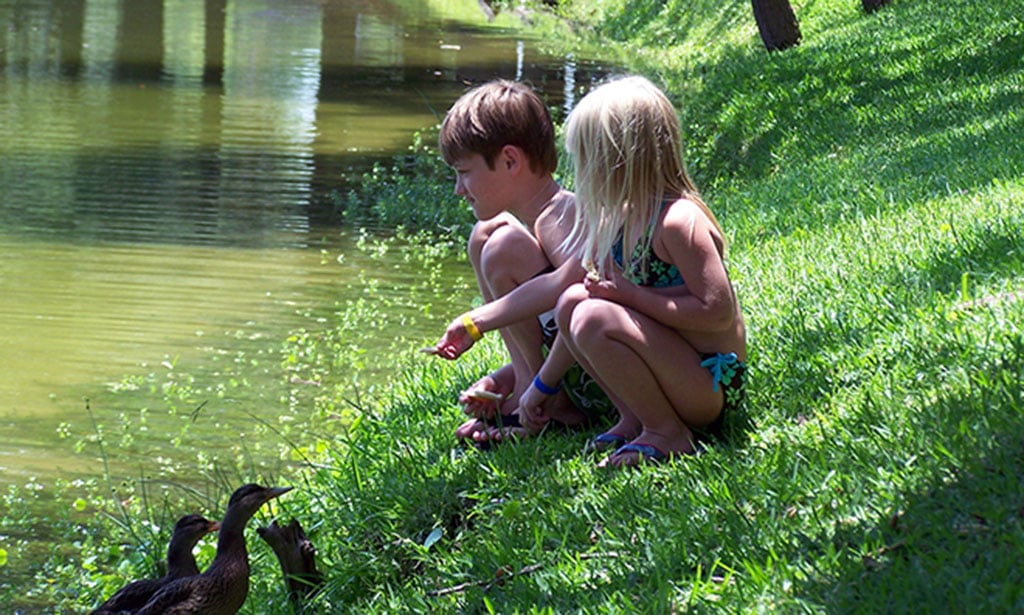It’s spring, and for many families the end of the school year is in sight. After a long, cold winter the last thing we want to do is sit inside at a desk or table and look outside at the beautiful sunshine. And as homeschooling families, we don’t have to! While nature walks, hiking, and gardening are great learning experiences, most of us have done and redone these perennial units each spring. It’s time to find new ways to enjoy and experience spring while finishing the year strong, and these homeschool lesson plans can work for preschoolers to high school homeschool students. So let’s try something new with these exciting hands-on spring lesson plans that are perfect for experiencing learning while getting dirty and having fun.
6 Hands-On Spring Homeschool Lessons
- Sensory Science– Take blindfolded walks through the woods or in a meadow. Those who are leading blindfolded partners have to be old enough to make this safe, but it can be a wonderful experience. Another variation is to blindfold several children and take each to a different tree. Ask each child to smell and touch her tree – to really get to know it through their other senses. Then lead each child back again from the tree, spin each one around several times, remove blindfolds – and ask each child to find ‘his or her tree’. Do leaf rubbings and take notes on the types of trees you’ve “sniffed out” on your hike and then research them when you get home to learn even more.
- Nature is Your Palate– Make the outdoors your studio this spring by creating a large work of art using mud, flower paint, leaf rubbings, etc. Roll out a long piece of butcher paper or a sheet and use what’s around your yard or at your local nature preserve to create a naturescape. Think pinecones, flowers, rocks, grass, moss, even mud! You can add drawings of wild life with paint or colored pencils to make your naturescape come to life.
- Build In Learning— Make that tree house, chicken coop, rabbit hutch or playhouse you never got around to. There are tons of free building plans online – take the time to print them out, make lists, strategies, and shop for materials, and then construct something amazing together. Be sure to discuss the mathematical and physical properties of building as you go.
- Buy Local, Learn Local– Find a local organic farm where you can pick berries, basil or tomatoes and learn how to make jam, pesto or tomato sauce. Meet with the farmer to discuss the local ecology, organic farming, the economics of farming, etc. Then plan a large family meal that focuses on the farm to table, healthy whole-foods aspect, and the social significance of eating together. If you can join the farm as part of their growing community to make this experience last all summer, do it!
- Lemonade Stand Economics—Plan a garage sale to rid your house of unwanted items. Older children can plan for and run the garage sale gathering and tagging items, and operating the sale while younger children can run a lemonade stand. This is a great way to teach math and economic principles such as budgeting, supply and demand, addition and subtraction, and money and make some extra cash for your summer vacation.
- Themed Event Exploration– Create theme weeks based upon what’s going on locally. Plan a lesson, and an outing that focuses on or ties into the theme during the week. Search the calendar or event section of your local newspaper for concerts and theater productions, read ads in local parenting magazines to find interesting activities for children, and then design unit lessons around that theme. If your children choose an outdoor Shakespeare festival, study the history, art, literature, and scientific discoveries of Elizabethan England. Whatever you choose, make sure to design fun, hands-on projects, review at the end, and tie it all together.
Have Fun But Keep In Mind….
As you embark on these new spring adventures, make sure the opportunity for YOU to learn more about your child does not pass you by. Pay close attention to their individual learning styles – for instance whether your child likes to read information or prefers to actually participate in a demonstration to fully “get” the material. And don’t always take the lead! Share power by allowing your students to make choices about themes, events, art medium, etc. as you tackle the fun lesson ideas above and explore all that spring has to offer.
In very simple terms: make spring learning a positive, hands – on experience to reap the benefits of the season!







